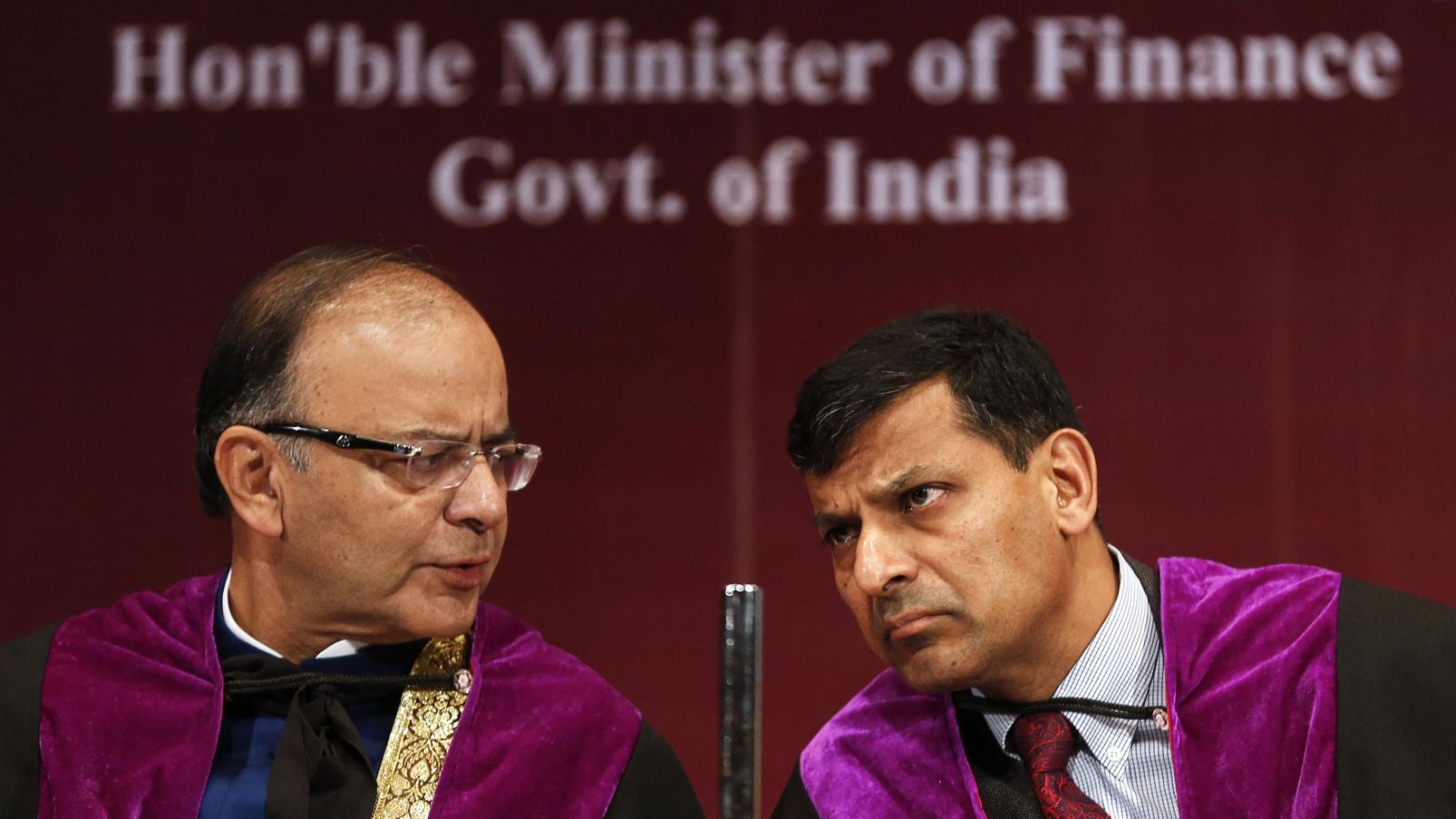Modi’s budget finally gets Raghuram Rajan’s approval with a surprise rate cut
Three days after finance minister Arun Jaitley presented the Narendra Modi government’s first full budget, Reserve Bank of India governor Raghuram Rajan cut the repo rate—the rate at which the central bank lends to commercial banks—pointing that India’s sticky inflation challenge is finally ebbing.


Three days after finance minister Arun Jaitley presented the Narendra Modi government’s first full budget, Reserve Bank of India governor Raghuram Rajan cut the repo rate—the rate at which the central bank lends to commercial banks—pointing that India’s sticky inflation challenge is finally ebbing.
Rajan said in an early morning statement on March 04 that the repo rate will be cut by 25 basis points to 7.5% with immediate effect. This is the second rate cut this year. The RBI had last cut the repo rate by 25 basis points on Jan. 15.
A decrease in the repo rate primarily means the cost of funding for banks will ease, boosting liquidity in the market. The cash reserve ratio (CRR), the portion of the total deposits of customers, which commercial banks have to hold as reserves with the central bank, remained unchanged.
“Prices of vegetables declined and, hearteningly, inflation excluding food and fuel moderated in a broad-based manner to a new low. Thus, disinflation is evolving along the path set out by the Reserve Bank in January 2014 and, in fact, at a faster pace than earlier envisaged,” the RBI statement said.
Rajan’s actions indicate that India’s central bank is finally a little more comfortable with the inflation scenario in the country. On Feb. 03, he had said that any rate cuts will depend on “high quality fiscal consolidation,” and put the ball in finance minister Arun Jaitley’s court.
The consumer price inflation data released on Feb.12, show that inflation in January was at 5.1%. This is well within the target of 8%, according to RBI’s statement. Rajan expects the inflation to soften in the first half of fiscal 2016 before firming up to below 6% in the second half of the year. The RBI will seek to bring down the inflation to 4% by the end of a two year period starting fiscal 2017.
Equity investors cheered the decision, as India’s benchmark Sensex index shot up 311.38 points, to 29,905 points in morning trading.
“Exciting morning! It looks like the RBI feels reassured by the budget proposals. The budget is going in the right direction with greater spending on infrastructure, something that the RBI has sought,” Frederick Neumann, co-head of Asian Economics at HSBC in Singapore told Reuters.
Whether there will be further easing in the monetary policy will only be clear on April 7, when the bi-monthly policy review is scheduled.
Meanwhile, Rajan also said that the fiscal reforms announced in the budget will improve supply in the medium term. Here are Rajan’s key reactions to the Union Budget:
On revised GDP estimates
Rajan said although the new GDP numbers present a picture of a “robust economy,” measures like growth in production, credit, imports and capacity utilisation are still low. “Nevertheless, the picture of a steadily recovering economy appears right,” he said.
On the reforms in the budget
The budget has many important and valuable structural reforms, which will help improve supply over the medium term, Rajan said. “In the short run, however, the postponement of fiscal consolidation to the 3% target by one year will add to aggregate demand,” he said, which is a source for concern for managing the macro-economic demand in the country, “especially with large borrowings intended for public sector enterprises.”
On fiscal deficit
The central bank governor said the true quantum of fiscal consolidation may be higher than in the headline numbers. Since the government will transfer a significantly larger amount to states, to the extent that state budget deficits narrow, the general fiscal deficit will be lower.
On the rupee
Even as the rupee has remained relative to peer countries, the RBI does not target a level for the exchange rate, nor does it have an overall target for foreign exchange reserves, Rajan said. “It does intervene on occasion, in both directions, to reduce avoidable volatility in the exchange rate,” he added.